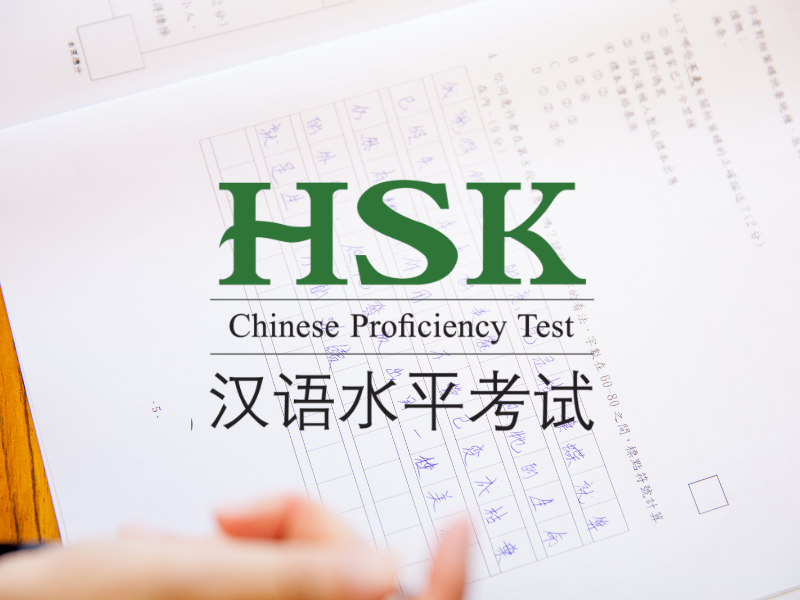Learning Chinese is an exciting and rewarding journey, but for many learners, it can feel like navigating a maze. That’s why the Hanyu Shuiping Kaoshi (HSK) — the official Chinese proficiency test for non-native speakers — is such a useful guidepost. The HSK not only measures your current level of Chinese but also provides a structured framework for setting learning goals and tracking progress.
But a question almost every learner asks is: “How long will it take me to pass each HSK level?”
The answer depends on many factors: your learning pace, consistency, whether you’re self-studying or taking classes, and how much exposure you get to real-life Chinese. Still, we can make useful estimates based on official guidelines, teacher experience, and student outcomes.
This blog will walk you through each HSK level (1–6), give you a realistic estimate of the study time required, and share tips on how to make your journey more efficient and enjoyable.
Understanding the HSK Framework
Before diving into timelines, let’s quickly review the HSK system.
- HSK 1 and 2: Beginner stages, covering everyday words, greetings, and simple sentences.
- HSK 3 and 4: Intermediate levels, where you can handle more complex grammar and real-life conversations.
- HSK 5 and 6: Advanced stages, designed for professional and academic use, requiring fluency in both spoken and written Chinese.
Currently, HSK has 6 levels, but in the future, a new HSK 3.0 will expand it to 9 levels. For this blog, we’ll focus on the classic 6-level system most learners are preparing for.
HSK 1: The First Step (150 Words & 174 Characters)
- Official requirement: Understand and use simple words and phrases, meet basic communication needs.
- Time estimate: 2–3 months with 30 minutes of daily study, or 50–80 total hours.
At this stage, you’ll learn:
- Numbers, dates, and time
- Basic greetings and introductions
- Simple sentence structures like “I like…” or “I don’t want…”
Tip: Focus on pinyin pronunciation and tones from day one. Getting tones right early prevents fossilised mistakes later.
HSK 2: Expanding the Basics (300 Words & 347 Characters)
- Official requirement: Communicate in simple, routine tasks requiring a direct exchange of information.
- Time estimate: 3–4 months after HSK 1, or about 100–120 total hours.
Here you’ll add vocabulary for:
- Talking about family, hobbies, and shopping
- Describing past and future events
- Asking and answering questions with more confidence
Tip: Start practicing listening comprehension daily. Even 5–10 minutes of podcasts, slow news, or children’s shows can train your ear to natural Mandarin rhythms.

bEST Chinese School London
Want to learn with us in our popular classes? Book our classes in London or Online to start.
HSK 3: Building Conversation Skills (600 Words & 617 Characters)
- Official requirement: Handle everyday communication at work, school, or travel.
- Time estimate: 6–8 months after HSK 2, or about 200–250 total hours.
At this level, you can:
- Participate in longer conversations about daily life
- Express opinions and describe experiences
- Read and understand short texts (ads, notes, menus)
Tip: Switch from pure memorisation to sentence mining. Collect example sentences from textbooks, dramas, or apps and review them. This makes vocabulary stick much faster.
HSK 4: Intermediate Mastery (1,200 Words & 1,064 Characters)
- Official requirement: Converse on a wide range of topics and communicate fluently with native speakers in familiar situations.
- Time estimate: 9–12 months after HSK 3, or about 400–500 total hours.
By HSK 4, you’ll:
- Read short news articles, blogs, or social media posts
- Write paragraphs, emails, and short essays
- Debate or explain your opinion on familiar issues
Tip: Make Chinese part of your lifestyle. Watch TV dramas with subtitles, follow Chinese influencers, or use apps like WeChat. Immersion accelerates learning more than textbook-only study.
HSK 5: Advanced Fluency (2,500 Words & 1,685 Characters)
- Official requirement: Read newspapers and magazines, watch Chinese films without subtitles, and deliver full speeches.
- Time estimate: 1.5–2 years after HSK 4, or about 1,000–1,200 total hours.
This is where learners truly start feeling fluent. You can:
- Understand most TV shows, podcasts, and interviews
- Read novels and academic texts with a dictionary
- Express yourself clearly in writing on professional topics
Tip: Develop a daily reading habit. Start with graded readers, then move on to native materials like novels or essays. Reading builds vocabulary faster than almost anything else at this stage.

Quick Chinese Test
Take a 5 mins quick test to find out where you Chinese level is!
HSK 6: Near-Native Proficiency (5,000 Words & 2,663 Characters)
- Official requirement: Easily understand written and spoken information, and express yourself smoothly in both written and oral form.
- Time estimate: 2–3 years after HSK 5, or about 2,000–2,500 total hours.
At this level, you’ll:
- Debate complex issues with fluency
- Read literature, research papers, or advanced texts
- Write essays or reports similar to a native speaker
Tip: Focus on refinement. You already know how to communicate — now polish your grammar, expand formal vocabulary, and learn idioms. Shadowing (repeating native audio word-for-word) is excellent for advanced learners.
Factors That Affect Study Time
While the estimates above are useful, remember that everyone’s journey is unique. Your actual pace depends on:
- Consistency: Daily practice beats long but irregular study sessions.
- Background: Speakers of related languages (like Cantonese or Japanese) often learn faster.
- Learning style: Some thrive in classroom settings; others do better with self-study or immersion.
- Environment: Living in China or engaging with native speakers speeds up learning dramatically.
Making the HSK Journey More Efficient
No matter your level, here are some universal strategies to maximize your study time:
- Spaced Repetition (SRS): Use apps like Anki or Pleco to review vocabulary efficiently.
- Balanced Skills: Don’t focus only on reading/writing. Listening and speaking are just as critical.
- Immersion: Surround yourself with Chinese through media, music, or daily conversation.
- Set Milestones: Take mock tests regularly to measure progress.
- Get Feedback: Teachers and tutors can correct mistakes before they become habits.
Sample Timeline for HSK Success
Here’s what a motivated learner might achieve with steady study:
- Year 1: HSK 1–3 (basic conversation and survival Chinese)
- Year 2: HSK 4 (intermediate fluency, everyday life mastery)
- Year 3–4: HSK 5–6 (advanced, professional fluency)
Some learners move faster, especially if immersed in China or studying full-time. Others may take longer and that’s okay! The HSK is not a race but a roadmap.

Quick Chinese Test
Take a 5 mins quick test to find out where you Chinese level is!

Book a trial lesson
Book a trial lesson to learn with us in London or Online!
How a chinese Language school Make your HSK Journey Easier
By setting realistic expectations about the time it takes to achieve each HSK level, you’ll stay motivated and avoid frustration. Whether your goal is to chat with Chinese friends, study at a Chinese university, or work in an international setting, the HSK provides a clear pathway to get there.
At Dear Asia London, we specialise in helping learners move through this journey step by step. Our structured Chinese classes are designed around the HSK framework so you’re always building the exact vocabulary, grammar, and skills you need for your next exam. More importantly, our teachers make sure you go beyond the test: speaking confidently, understanding native media, and using Chinese naturally in everyday life. With the right guidance, support, and practice, your HSK goal may be closer than you think.







